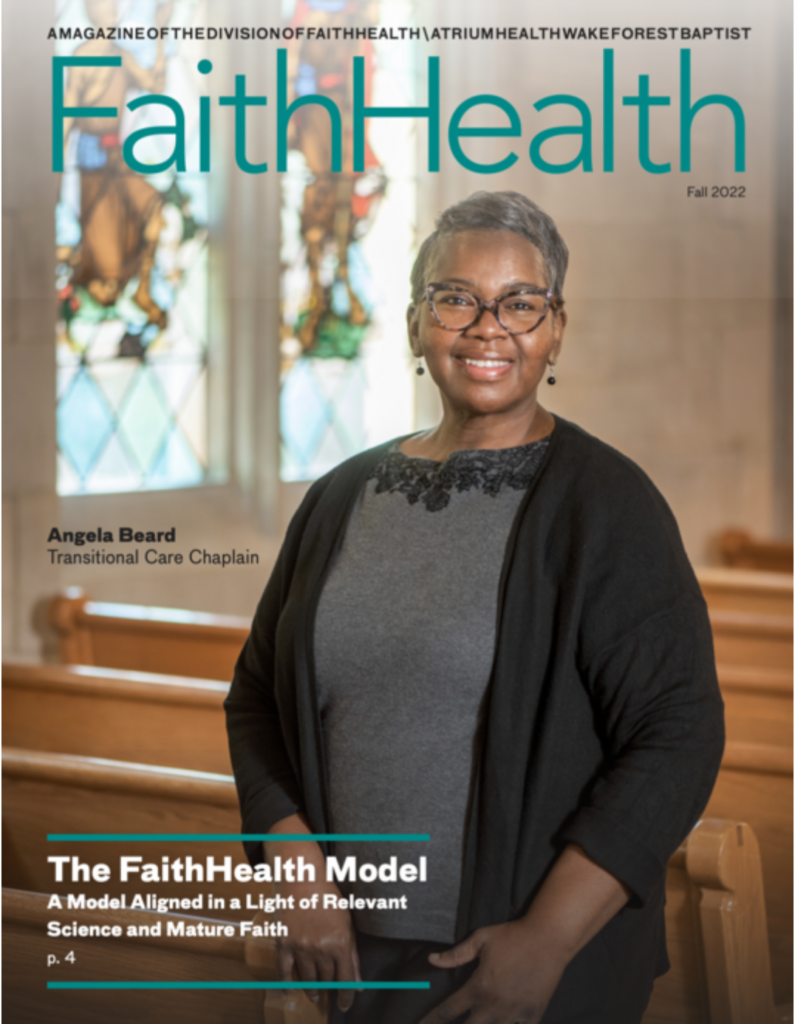 Why Faith and Health Go Together
Why Faith and Health Go Together
Interview by Les Gura
As president of the nonprofit North Carolina Hospital Association, Bill Pully heads an organization representing the state’s hospitals that offers leadership, advocacy, information and education aimed at improving the delivery of quality and affordable health care. Pully shared his thoughts about FaithHealthNC and the efforts to create partnerships in health care.
Why is a faith and health connection important to the North Carolina Hospital Association?
One, and this is a bias I’ve had for a long time, is that people of faith make good caregivers. The other reason is because of our focus on patient and family engagement. Statewide, patient safety is a goal of the North Carolina Hospital Association and our North Carolina Quality Center.
Tell us a little more about how safety relates in this issue.
Over the past few years, the boards of the North Carolina Quality Center and the North Carolina Hospital Association have adopted annual patient safety goals.
We’re asking every hospital in North Carolina to dedicate resources — time, money or people — to patient and family engagement. It’s important to get more families engaged in care because they know more about their families than caregivers do. The knowledge that they bring and share with providers helps overall safety efforts.
So you see FaithHealthNC as an expansion of family when it comes to engagement?
I got very excited about the similarity between what Gary is bringing to the state in terms of patient, family and community engagement because it fits in our overall mission. What Gary does is tap into the incredible resources of people of faith who are out there to give back in something bigger than themselves. He spoke on the subject at our summer meeting in Asheville.
How is this relevant in terms of improving health on a broader scale?
When you look at the determinants of health, socioeconomic factors are some of the biggest issues involved. Gary’s program is not only geared toward the faith community in general, but the faith community in underserved areas. It’s important to focus on the socioeconomic underpinnings of why people may not live healthy or be healthy. Getting people in the faith community interested can help in reaching people and assisting them to manage chronic illnesses such as diabetes, obesity, high blood pressure. And they can reinforce the underlying need for everyone to live a healthier lifestyle.
Will health systems statewide see the benefit and join the FaithHealth movement?
Yes. I think it’ll take root and will be seen as a very good strategy to get patients and families and communities engaged. As a matter of fact, I think it’s the best one that’s out there right now. Patient and family engagement are important, but this takes it to the community. Trying to reduce the utilization of services means we have to take it outside. If we help create homes where people are focused on chronic disease and illness and what they have to do to avoid them, we can reduce utilization of the health care system, which is a big goal of the federal Affordable Care Act. It’s pretty exciting when you think about it.
